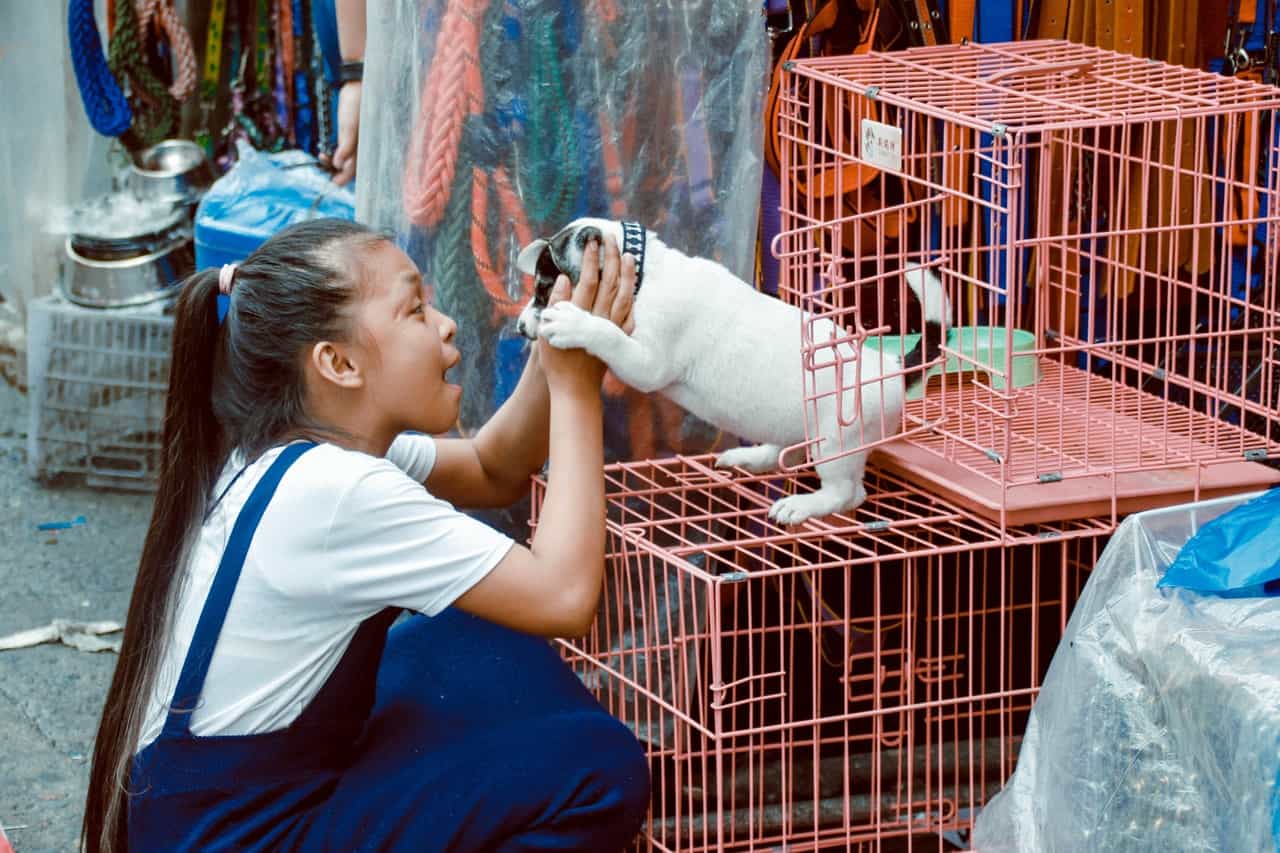We are a professional blog site that may receive compensation or free samples from the companies whose products and topics we write about. We are independently owned, and the opinions expressed here are of the writer. To read the full disclosure click here.
________________________________________________________________________
You’re the proud owner of a new puppy! Congratulations! Now you need to learn how to crate train a puppy. Crate training young dogs ensures he or she feels comfortable inside a crate. In turn, you will be able to manage him or her better. That goes double if they grow up to be a big dog.
Why to crate train a puppy
There are numerous reasons why learning how to crate train a puppy is necessary.
- Car crashes are a common occurrence. Dogs and puppies kept in crates during car rides are more likely to escape a crash unharmed.
- In the event of a major natural disaster, you may be required to evacuate. Many shelters require that furry friends be crated. Being stuck in an unknown locale is stressful enough for animals without being stuck in a crate for the first time.
- A common vet recommendation post-injury or surgery is crate time, which allows them to focus on rest. If your pet has never been in a crate, though, they won’t focus on rest. Instead, your puppy will feel more stressed because the crate will be an unfamiliar environment.
How to crate train a puppy
1. Pick a crate
Picking a dog crate can be difficult because there are so many different kinds. For example, you can choose a wire crate or a soft plastic crate. The main factor you should consider when choosing a crate is your puppy’s future size. Sure, they’re a cute, little bundle of joy now, but what about a year from now? Depending on the breed, they may become bigger than you! It’s likely you don’t want to replace the crate with a new one a year from now. So when shopping, pick a crate that will accommodate your puppy’s future size. Additionally, consider their food, water, and bathroom needs.
2. Find a place for the crate in your home
The best place to put a crate is in a quiet, low-traffic area. That way, your puppy doesn’t become overstimulated while in the crate. A hyper puppy will keep barking for your attention! Crate time should be considered rest time. In order words, a time for both you and young dog to relax.
3. Include spill-proof bowls
Of course, you don’t want to crate your puppy without addressing his or her needs. Unfortunately, if you place traditional bowls of food and water in the crate, they will likely be spilled. Cleaning up crates can get messy. To avoid water and food spills, buy clip-on bowls that snap onto crate doors so your puppy can’t accidentally spill them.
4. Make the crate a happy place
Crates should never be used for punishment. Making them into a place of punishment will deter your puppy from using it as a place of rest. Instead, you should make your puppy’s crate into a place of happiness. Include a few of their favorite toys. Another addition you’ll want to strongly consider is an electric safety blanket. These blankets are comfy and have wires running through them that, when the blanket is plugged in, heat them up. Your puppy will never spend a winter night cold, even when the temperature outside reaches freezing levels.
5. Introduce your puppy
Do not force your puppy to enter the crate, that will discourage them from using the crate. Instead, simply show it to them. Place some dog treats inside if need be. Let your puppy enter on their own accord.
6. Determine a schedule
When your puppy enters the crate, close the door and keep them inside for a set amount of time, a half-hour is a good length of time. Not too long, but long enough for them to see what it’s like being crated. As the puppy becomes used to the crate you can extend the time.
7. Ignore whining
Learning how to crate train a puppy can be difficult, ignoring unhappy whining and whimpering is part of why. But if you want to successfully crate train your puppy, you’ll need to do it. Don’t pay attention to their whining. Your puppy will be released soon enough.
8. Go outside
When your puppy becomes comfortable staying in the crate for longer periods of time, try leaving the house, go outside for a half-hour. Once they adjust, increase the length of your absence. Your short leave will simulate what it will be like for your puppy to be crated alone.
9. Help your puppy relax
Sometimes, the reason why puppies don’t adjust well to being crated doesn’t have to do with the crate, it may have to do with high energy. Be sure to get your puppy some exercise before putting them in the crate. Go for a walk or play for a bit in the yard. Your puppy will be more ready to rest afterward.
10. Make the crate into a safe haven
The ultimate goal of crate training your puppy is creating their own little area. The puppy should feel comfortable, and happy to go into the crate for a nap. If you get the impression your puppy is uncomfortable or doesn’t like the crate, stop and think. What can you do differently that will make them more receptive to the crate? Sometimes a little trial-and-error is needed to ensure your puppy feels comfortable. But extra time spent crate training is well worth a happy puppy!
Author’s Bio: Deinah Storm is a pet lover who has had cats and dogs all her life. When she’s not walking the dogs with her family, she spends time writing informational and interesting blogs about pets to share with pet lover communities.






